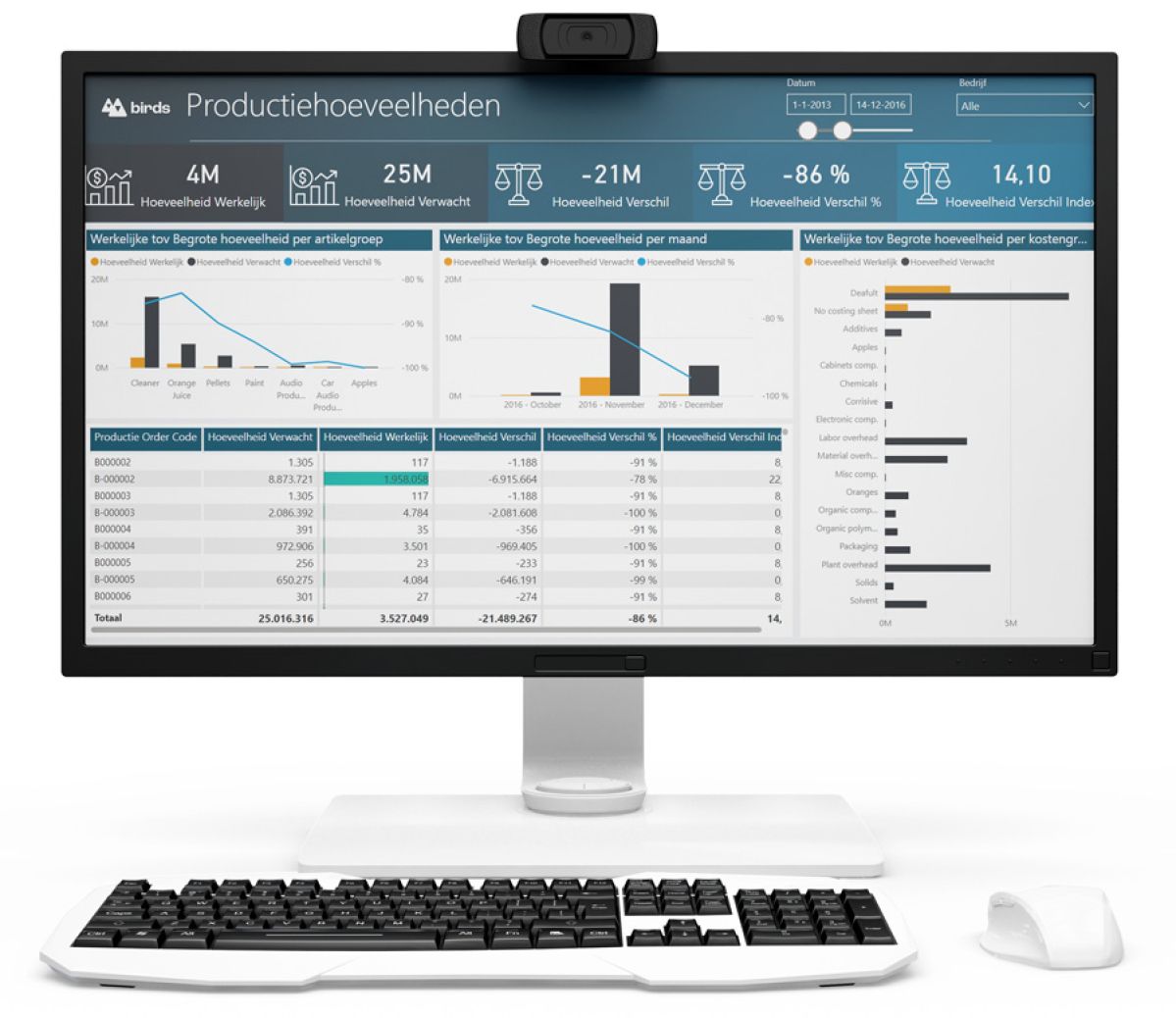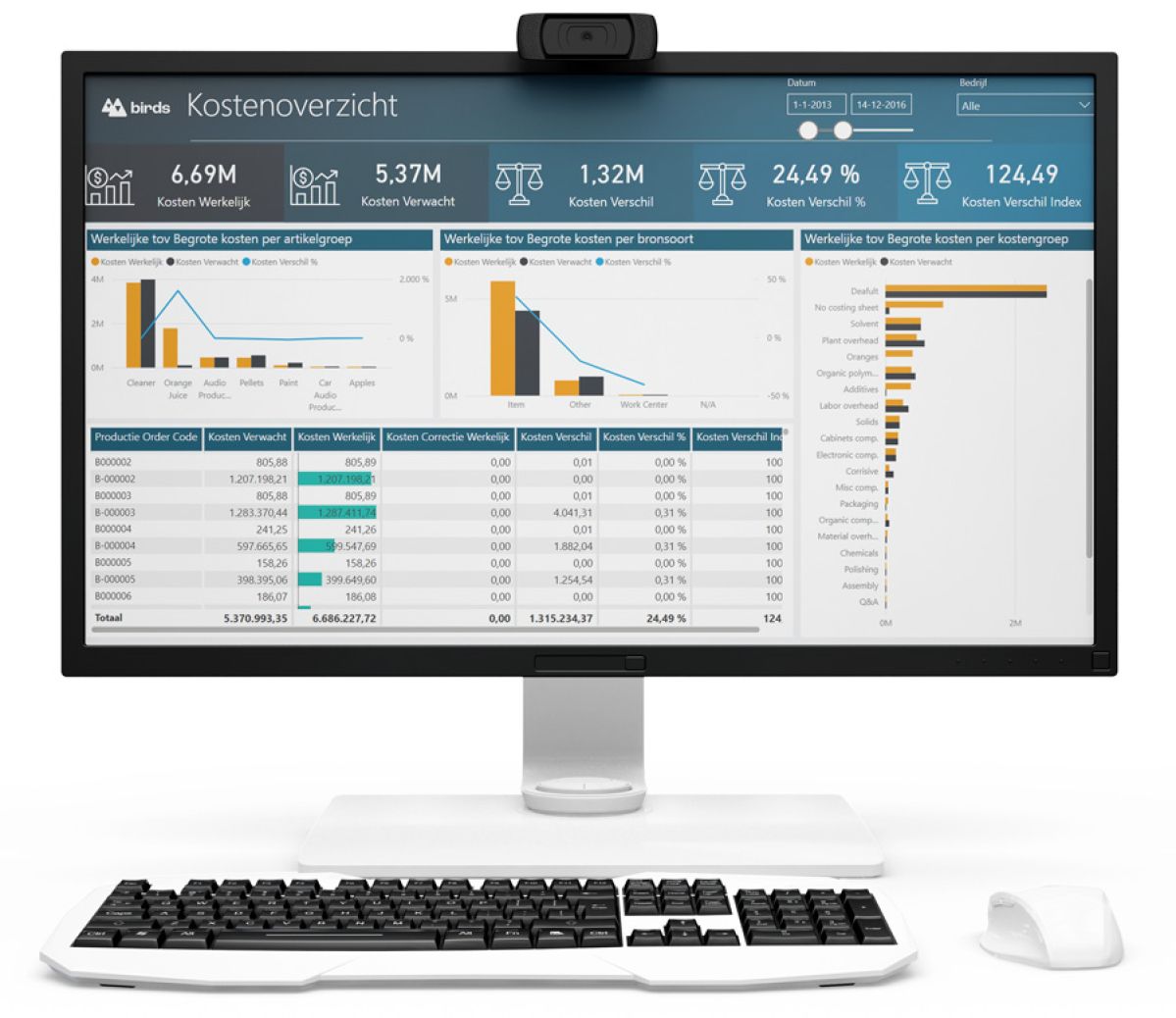To gain control over your business operations, data and insights are indispensable.
Adjusting crucial KPIs is essential for optimizing your production and supply chain, improving profit margins, and minimizing losses.
With our experience with both food and non-food producers, we have identified five KPIs that are critical for achieving these objectives.
1. Production Capacity Analysis
This KPI evaluates the maximum output that a production system can generate within a specific period compared to actual production.
It involves measuring productivity, efficiency, and the utilization of resources such as labor, equipment, and raw materials.
By employing this KPI in Power BI reports or dashboards, you can:
- Identify potential bottlenecks.
- Optimize resource allocation.
- Enhance planning to maximize production capacity.

2. OEE – Overall Equipment Effectiveness
This KPI is the percentage of planned production time that is actually effective for manufacturing, multiplied by the quality level of the products produced and the speed of production.
OEE measures the overall efficiency of the equipment, assessing downtime, speed, and quality, to optimize the performance and productivity of the manufacturing process.
3. Expected vs. Actual Costs
This KPI displays the difference between the estimated costs for a project or activity and the actual costs incurred, expressed either as a percentage or an absolute amount.
What this measures is the accuracy of cost estimations and the effectiveness of cost control during execution.
It encourages precise budgeting and cost monitoring to meet financial objectives and optimize returns.
On-demand BIRDS demo video
Interested in seeing how BIRDS generates data insights?
Check out our on-demand demo video of BIRDS, specifically aimed at the Fashion & Retail industry.
Within a Power BI environment, we will show you how BIRDS operates and explain the specific reporting capabilities available for Fashion & Retail organizations.

4. Waste Percentage
This KPI measures the waste percentage per production batch, calculated as the difference between the expected and actual amount of waste, divided by the expected amount and multiplied by 100%.
It assesses the efficiency of the production process and promotes waste minimization, which reduces costs and enhances sustainability.
5. TEEP - Total Effective Equipment Performance
TEEP is a measure of the total efficiency of equipment in a production setting, accounting for availability, performance rate, and quality rate.
This KPI is calculated by dividing the actual production time by the theoretical maximum production time, multiplied by the performance rate and the quality score.
It measures how well equipment is utilized in terms of availability, speed, and quality.
TEEP enables you to:
- Optimize equipment performance.
- Reduce downtime.
- Lower production costs.

Use These KPIs for quick adjustments
Being able to quickly adjust based on essential KPIs is crucial for a manufacturing company.
Therefore, we recommend implementing these KPIs in your Power BI dashboards and reports and using them for effective management within your organization.
We understand that this is only possible if you have access to all crucial data from various systems in your reports.
Therefore, ensure that standardized collection and consolidation of this data are prioritized and that reports are deployed across the organization as a foundation for informed decision-making.